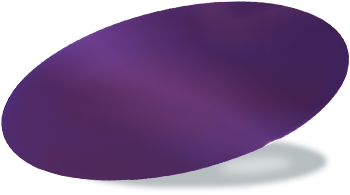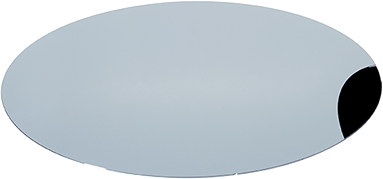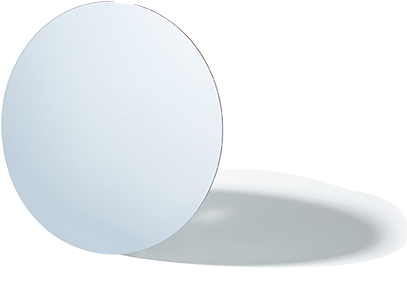SHE
- SHE Management
- Safety
- Health
- Environmentcurrent
Environment
Global product regulation response
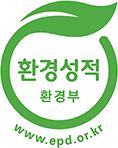
SK siltron has proactively responded to global product regulations by establishing 2012 Regulation Substance Response System (GP)
in 2012. in order to proactively respond to global product regulation.
Since then, preliminary SHE inspection, product substance analysis and evaluation of the entire manufacturing process have been completed and
in January 2018, Environmental Product Declaration (EDP) was obtained. Procedural standards was were established to respond to the product regulation certifications of each country (EU REACH, RoHS etc.) and analysis of production substance is carried out in by certified institutes organizations annually.
impacts of products and services accurately and transparently
regulation per state in progress
Response against Climate change
GHG Inventories has have been established and emission verification work have has been completed to achieve green management.
Dedicated organizations has have been constituted for greenhouse gas management, infrastructure has been prepared and reduction targets compared to
BAU by 2020 has have been established by members as part of the initiative to reduce greenhouse gas.
- Implementation of emission trading (Jan. ‘15)
- Adoption of Paris Convention (Dec. ’15)
- Establishment of GHG Inventory
- Assignment of companywide GHG reduction target
- Development of tool for evaluating cost-effective reduction activity
- Execution of carbon emission impact assessment
- Advancement of companywide response system against climate
- Secure Hidden Emission reduction
Energy response
SK siltron has declared voluntary agreement voluntarily agreed to reduce energy, introduced implementation activity and
management technique to reduce greenhouse gas emission reduction and energy use and are engaging in unit load reduction activities through optimization of equipment operation.
In addition, 154KV power substation is being operated in Gumi Plant 1 and 3 to supply stable power.
- OAC hot water circulation heating with ICW waste heat recovery (installation of heat pump)
- Diagnosis of heat loss in steam pipe etc.
- Reduce ICW cold water load using general exhaust discharge air
- Reduce power by replacement with highly efficient chilling unit
- Reduce electricity cost by improving auto control of high cost water tank supply pump etc.
- Change cooling water in pump room at wastewater treatment plant
- Reduce water by establishing wastewater reuse system etc.
Environmental pollution prevention facility
- Air
-
Tasks are identified and targets are achieved every year in order to improve the treatment efficiency in of air pollution prevention facilities that processes air pollutants such as particles and gases created at in business premises.
Leading actions are taken against due to amendment of related laws such as reinforcing effluent quality standard of air pollutants and monitoring system has have been established to check the operation status of air pollution prevention facility real-time for prompt and proactive response.- Facility for absorption
- Electricity dust collector
- Filtration dust facility
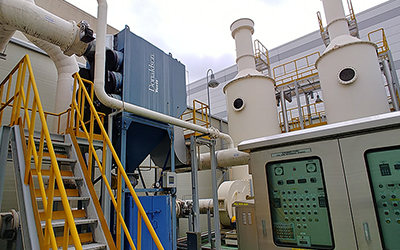 Filtration dust collecting facility
Filtration dust collecting facility
- Water
-
Wastewater treatment equipment is minimized through wastewater recycling. when By expanding wastewater treatment plant, post-treatment technology is oriented by expanding utilized equipment and sustainable development in the form of resource circulation is achieved.
Physiochemical/biological treatment systems is are being operated and periodic treatment efficiency tests is are conducted and applied for a more stable wastewater treatment.- Wastewater treatment equipment
- T-N treatment facility
- Equipment for water recycling
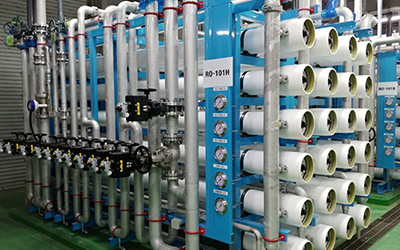 Water reuse equipment
Water reuse equipment
- Waste
-
Measures that can fundamentally reduce the total amount of waste created from incoming materials ingredient incoming to production processes are identified. Continuous efforts are being made to find measures for utilizing waste recycling.
- Emission management
- - Responsibility system for people who discharge waste
- - Meter-rate system for waste
- Guidance and management of separated discharge in executive and employee/vendor and regular inspection
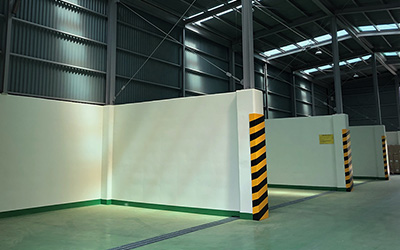 Storage place of general/designated waste
Storage place of general/designated waste
- Emission management
